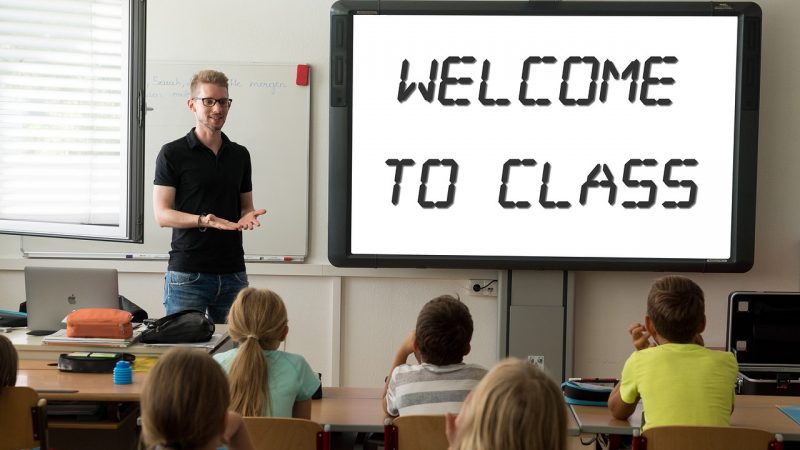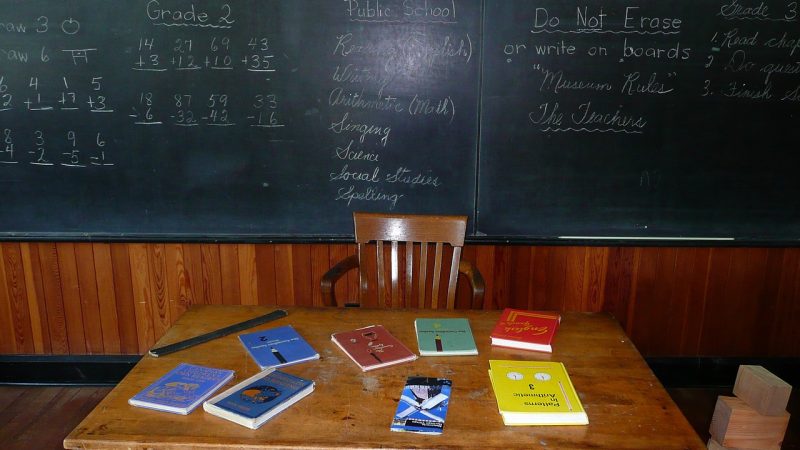English teachers undertake the vital task of developing students’ language skills and inspiring a love of literature. Having access to high-quality resource books elevates lesson planning, expands teaching strategies, and provides helpful ready-to-use content. This definitive guide profiles 20 of the top-rated resource books for English teachers across primary, secondary and high school levels.
1. The Teacher’s Binder
This 3-ring binder style reference organizes English teaching resources into tabbed sections for quick access. Materials span phonics, vocab, writing, reading, assessment and more. Over 850 printable pages provide adaptable activities, lesson plans, rubrics, templates and visual aids. An essential foundation for any teacher’s shelf.
Key Features:
– Customizable binder structure
– Standards-aligned content
– Printable resources for direct use
– Materials for varying skill levels
– Time-saving lesson planning aids
2. The Big Book of Reading Comprehension Activities, Grade 1
Honing reading comprehension skills starts early. This book provides over 100 reading activities tailored for grade 1 learners. Interactive and hands-on games build literacy fundamentals from phonics to interpreting stories. Multi-sensory techniques spark engagement. Reproducible pages allow easy classroom integration.
Key Features:
– Phonics, vocab and sight word activities
– Lessons on story structure and details
– Critical thinking and discussion prompts
– Fiction and nonfiction reading content
– Reproducible worksheets and assessments
3. Grammar Keepers
A strong grasp of grammar provides a foundation for quality writing. This beloved guide breaks down grammatical concepts through clear explanations, engaging examples and practical exercises. Unit quizzes help diagnose student strengths and weaknesses. An essential handbook for teaching essential grammar skills.
Key Features:
– Concise explanations of grammar rules
– Real-world examples for relevance
– Diagnostic unit quizzes
– Hundreds of practice exercises
– Writing development extensions
4. Vocabulary Power Workbook – Grade 8
Expanding vocabulary empowers self-expression and reading comprehension. This volume in the trusted series focuses on grade 8 vocabulary acquisition. Activities like crosswords, matching games and fill-in-the-blanks engage learners creatively. Pre-tests and post-tests assess growth. Answer keys provide supportive feedback.
Key Features:
– Targets 800 core academic vocab words
– Interactive and game-based exercises
– Pre and post-tests to gauge progress
– Learning strategy tips
– Answer keys for teacher reference
5. Literature Circles
Literature circles promote active reading, discussion and analysis of texts. This definitive guide outlines best practices for implementing peer-led book clubs in classrooms. Strategies foster meaningful dialogue and deep learning. Includes ready-made discussion prompts, role sheets, rubrics and activities to kickstart engaging groups.
Key Features:
– Explanations of discussion techniques
– Proven implementation frameworks
– Customizable role sheets for analysis
– Rubrics for peer assessment
– Guidelines for teacher monitoring
6. Daily Word Ladders
Quick daily word study activities reinforce spelling, phonics and vocab skills. This book provides 100 creative word ladders that prompt students to change letters in 5-8 letter words to form new terms. Engaging format helps cement learning through active connections. Ladders increase in difficulty gradually over the term.
Key Features:
– 100 word ladder puzzles
– Reinforces phonics and spelling skills
– Promotes vocab development
– Increases word recognition
– Tracks progress with self-checking
7. The Essentials of Teaching Health Education
Health literacy is an underserved but vital area. This stellar curriculum guide helps health teachers deliver comprehensive, skills-based programs on wellness topics. Engaging lesson plans backed by standards provide a strong framework augmentable with custom content. An invaluable manual for navigating sensitive subjects effectively.
Key Features:
– 150 adaptable lesson plans
– Meets national curriculum standards
– Incorporates reading, writing, discussion
– Promotes skills like decision making
– Fosters health-literate students
8. 101 Debate Activities For Kids
Debate activities teach critical thinking, communication and collaboration skills. This handbook delivers 101 highly engaging debate ideas spanning relevant issues like technology, education and the environment. Wise facilitation tips help generate meaningful dialogue. Perfect for sparking student interest in competitive forensics.
Key Features:
– Debate plans for groups and pairs
– Critical issues relevant to kids
– Persuasive speaking practice
– Develops reasoning and rhetoric
– Guidelines for respectful dialogue
9. Teaching Poetry
Poetry enhances literary appreciation and creative expression. This definitive guide equips teachers with frameworks for illuminating poetry’s rhythms, structures and figurative language for students. Ready-made lesson plans, prompt cards, response sheets and rubrics simplify classroom integration. Essential for demystifying the elements of poetics.
Key Features:
– Lesson plans spanning poetry genres
– Templates for response and analysis
– Guided close reading exercises
– Tools for unpacking rhyme, rhythm, imagery
– Strategies for performance and recitation
10. 101 Drama Games And Activities
Applied drama builds confidence, collaboration and communication prowess. This indispensable handbook delivers 101 highly engaging drama-based activities to ignite student participation. Includes group games, improv prompts, scene starters, play creation ideas and more. Perfect for drama classes or synthesizing across the curriculum.
Key Features:
– 101 interactive drama activities
– Fosters teamwork and imagination
– Develops confidence and focus
– Drama games for all skill levels
– Ideas for group play creation
11. Month-by-Month Writing Prompts
Daily writing practice hones skills and provides meaningful outlets for expression. This book delivers 60 creative monthly writing prompts spanning genres like fiction, memoir, poetry and journalism. Prompts inspire reflection and storytelling on topical seasonal themes. Perfect for journaling, class discussion starters and essay writing warm ups.
Key Features:
– 60 monthly writing prompts
– Cross-curricular relevance
– Mix of assignment types
– Seasonal themes
– Adaptable for all ages
12. Literature Discussion Cards
Deep reading comprehension arises through dialogue. These handy prompt cards catalyze rich peer discussions of fiction and nonfiction texts. Generic prompts allow application to any literary work. Color-coded categories like symbols, themes and author style scaffold analysis skills. Detailed facilitation tips maximize insightful exchange.
Key Features:
– 120 discussion prompt cards
– Promotes active reading habits
– Initiates critical analysis
– Adaptable across texts and genres
– Guidelines for productive dialogue
13. Making Thinking Visible
Effective questioning uncovers complex learner thinking. This research-backed guide provides frameworks for eliciting students’ thought processes around academic content. Introduces thinking routines like See-Think-Wonder to surface assumptions, interpretations and inquiries through collaboration. An invaluable tool for developing visible learners.
Key Features:
– Thinking routines to elicit student ideas
– Better questioning strategies
– Tools to uncover misconceptions
– Classroom observation checklists
– Frameworks for probing thought processes
14. Teaching English Language Learners
Nearly 10% of students are English language learners. This all-in-one handbook helps teachers meet their diverse needs within mainstream English programs. Research-backed methods deliver content while building language skills. Plentiful templates provide scaffolds emphasizing comprehension and conversation. Crucial strategies for supporting ELL inclusion.
Key Features:
– Foundational teaching frameworks
– Printable lesson planning aids
– Visual vocabulary building tools
– Graphic organizers and templates
– Strategies for scaffolding and differentiation
15. Teaching High School Speech and Debate
Speech and debate classes hone communication and critical thinking prowess. This indispensable guide provides lessons, activities and curriculum maps for delivering high school forensics courses. Oratory, interpretation and debate events help students find their voice. Perfect for starting a team or strengthening skills.
Key Features:
– Standards-aligned curriculum maps
– Instructional units on speech types
– Debate event lesson plans
– Speech writing and delivery methods
– Tips for running teams and tournaments
16. Monthly Reading Logs K-6
Consistent reading expands literacy skills. These printable reading logs motivate children to read daily with coloring activities and monthly challenges tailored to grades K-6. Sections to log minutes, rate books, set future goals and share favorites encourage reflection. Fun supplemental badge rewards celebrate progress.
Key Features:
– 12 monthly kid-friendly reading logs
– Tracks minutes and number of books read
– Book rating activities
– Goal setting and reflection
– Reward badges and certificate
17. Making Connections Low Intermediate Literature
Developing reading fluency requires accessible texts. This series provides engaging story collections for low-intermediate ESL students featuring relatable plots and natural language. Pre-reading vocabulary exercises prepare for comprehension. Post-reading prompts elicit personal connections. Ideal transitional texts.
Key Features:
– 10 thematic story collections
– Targeted to low-intermediate ELLs
– Vocabulary warm ups
– Comprehension discussion prompts
– Graphic organizers for response
18. Picture Book Companion
Picture books aren’t just for elementary students. This unique handbook demonstrates how to analyze illustrations and text in children’s literature more deeply. Prompt cards elicit visual reading skills and symbolism detection. Empowers sophisticated literature study using deceptively simple mediums.
Key Features:
– frameworks for studying visual rhetoric
– Prompts for close pictorial reading
– Highlights illustrator techniques
– Strategies for cross-curricular integration
– Enhances visual literacy skills
19. Writing Fabulous Essays
Essay writing is a cornerstone skill needing practice. This handbook equips students to plan, organize and execute essays efficiently. Outlines drafting stages and techniques to generate thesis statements, intro hooks, body paragraphs, transitions and conclusions. With its step-by-step approach, writing polished essays becomes easy.
Key Features:
– Sequential writing process overviews
– Essay structure templates
– Idea and quote gathering guidance
– Transition word banks
– Proofreading and editing checklists
20. Teaching Adolescent Writers
Exemplary writing instruction meets learners at their skill levels. This research-backed guide empowers teachers to target adolescent writers’ diverse needs, strengths and challenges. Strategies grounded in motivation, choice and scaffolding accelerate growth. Solid methods for increasing engagement and capacity in developing writers.
Key Features:
– Developmental writing patterns
– Tailored instruction frameworks
– Conferencing and feedback tools
– Options for differentiation
– Ways to make writing enjoyable
Amply stocking shelves and digital drives with these invaluable resources gives English teachers an expansive toolkit. Having stellar books to reference elevates lesson planning abilities, expands pedagogical approaches and provides helpful ready-made content. These 20 volumes deserve a spot in every teacher’s professional library.










